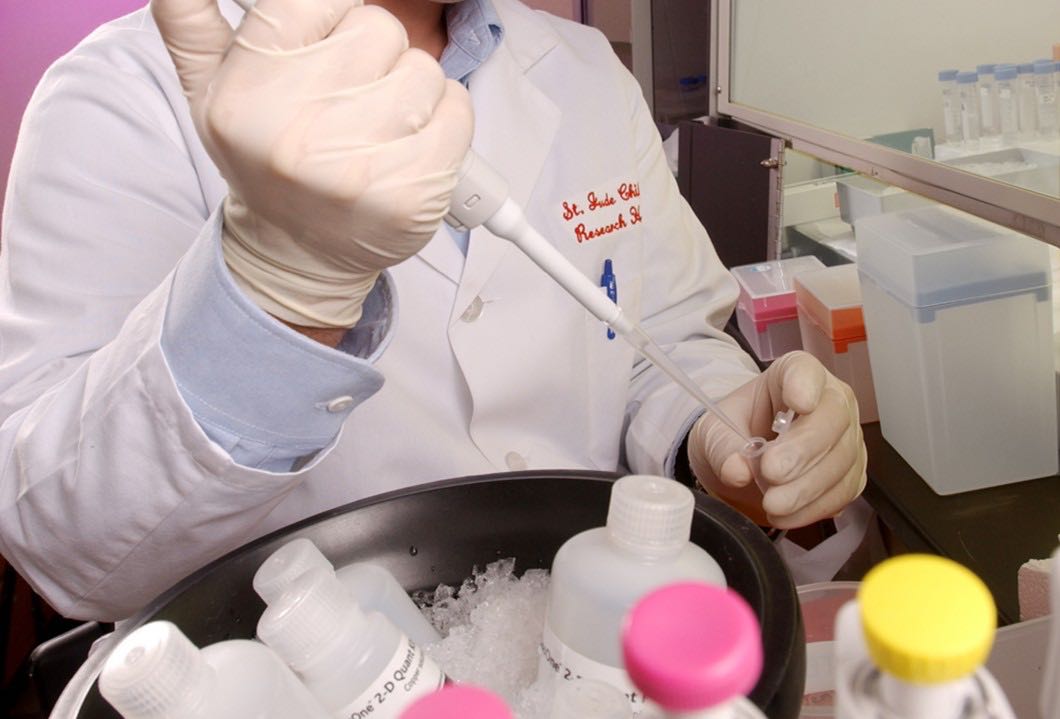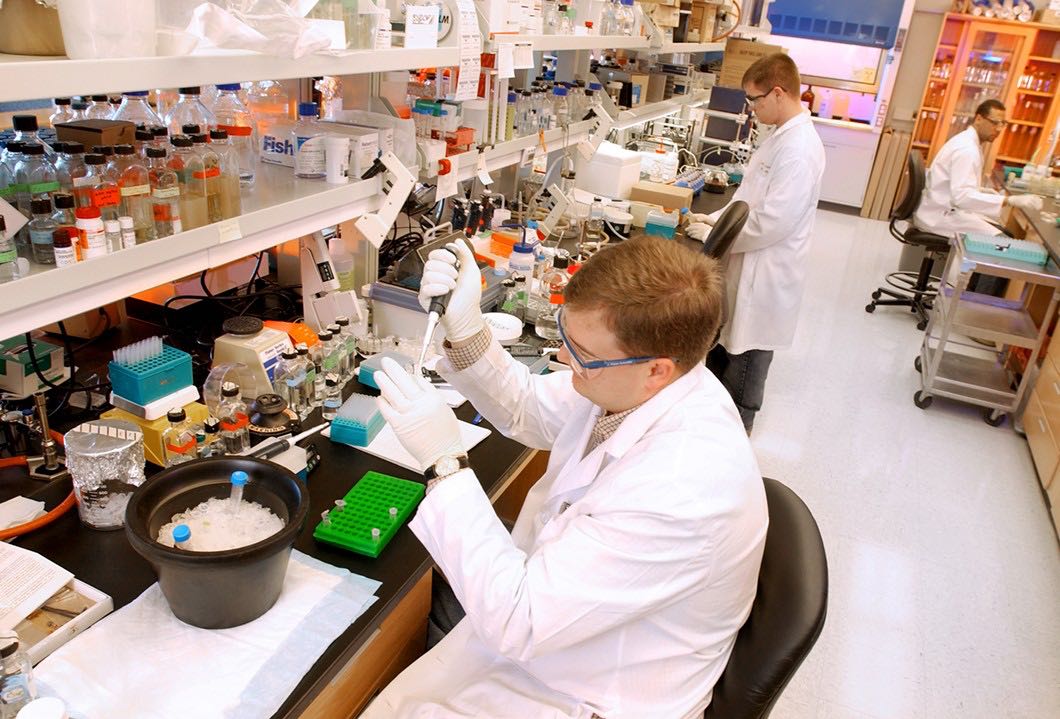Project Overview
Services Provided
- Design-Build.
- Location Consulting.
Location
The Austin Company provided consulting, architectural design, engineering and construction services for St. Jude’s new state-of-the-art GMP facility. The facility consolidates 4,000 SF of manufacturing space formerly spread out across several locations on the campus. It is the only on-site pediatric cancer research center of its kind, bringing research and product development together under one roof.
The new facility features a core unit dedicated to producing highly-specialized medicines and vaccines that pharmaceutical companies are reluctant to produce in small quantities due to high costs. The facility also includes Biological Safety Level 3 (BSL-3) laboratories that allow researchers to work with microorganisms that must be specially contained.
Extreme care must be taken to understand research and production processes when designing a GMP facility. A thorough understanding of all aspects of the operation must be achieved to ensure a successful outcome. At the onset of the project, Austin conducted a discipline-by-discipline review of GMP impact on designing, building and operating the facility. This included mechanical systems, processes, utilities, electrical and architectural issues.
Offering a dedicated in-house team of architects, engineers and construction professionals with experience in creating environments for life sciences, Austin made this process seamless.
Not only did the facility meet St. Jude’s project requirements, it’s extremely flexible and modular design allows it to quickly adapt to new demands as ongoing research discoveries lead St. Jude scientists in new directions.
The ability to adapt laboratories and manufacturing suites to changing needs makes this project a long-term medical research commitment to the children of the world. It also supports the hallmark strategy of St. Jude — swiftly taking research from the laboratory to the clinic.
The facility was designed with flexibility, allowing researchers to use space for a variety of products not dedicated to a specific need. The programming and design effort addressed the procedural issues of personnel; material, product and waste flows; HVAC pressurization and zoning; location and access of mechanical systems; and architectural finishes.
The HVAC system provides for clean-room design and once-through airflow, with nearly one-third of the space taken up by mechanical systems. Another one-third of the building will be used for actual manufacturing. The remaining space will be used for raw material storage, cell quarantines, general circulation and support offices.
St. Jude Children’s Research Hospital was founded by the late entertainer Danny Thomas. The hospital is an internationally recognized biomedical research center dedicated to finding cures for catastrophic diseases of childhood. The hospital’s work is supported by ALSAC, St. Jude’s fundraising arm. ALSAC covers all costs not covered by insurance for medical treatment rendered at St. Jude Children’s Research Hospital. Families without insurance are never asked to pay.

